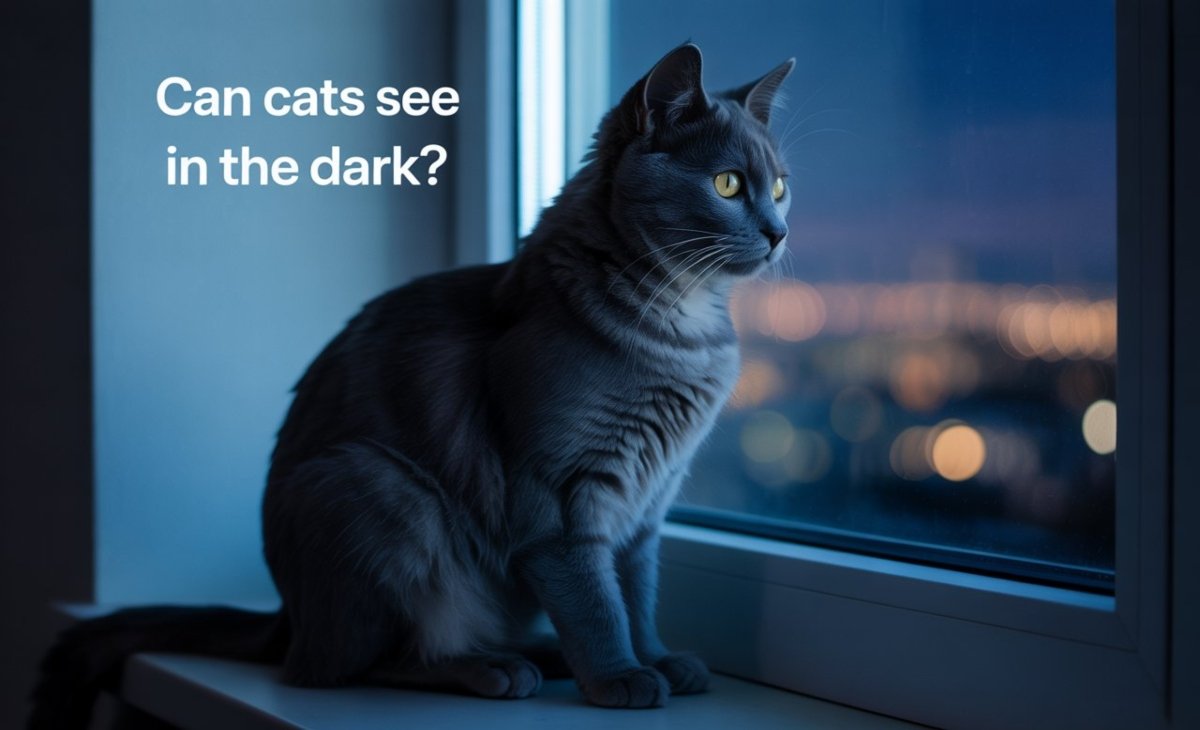If you’ve ever seen your cat leap gracefully across the room in near darkness, you may wonder, can cats see in the dark? Their mysterious nighttime adventures—from silent prowls to sudden pounces—certainly make it seem like they have built-in night vision. While they’re not superheroes, cats do possess incredible adaptations that help them navigate when light is scarce. This guide explores how feline eyes work, why they excel in dim light, and what it means for you as a cat parent.
What Does “Seeing in the Dark” Really Mean?
When people ask can cats see in the dark, they often imagine complete blackness. But even the most skilled hunter needs some light. Cats cannot see in absolute darkness. Instead, their eyes are designed to use every available bit of light—from moonbeams to the faint glow of an appliance clock—far better than ours can.
The Science Behind Feline Night Vision
Rods vs. Cones: Built for Low Light
A cat’s retina is packed with rod cells—photoreceptors that detect light and motion. Humans rely more on cone cells, which provide color and detail in bright conditions. This difference explains why cats see better at dusk or dawn while our eyes struggle.
The Tapetum Lucidum: Nature’s Mirror
That eerie green glow you notice in a cat’s eyes at night comes from a reflective layer behind the retina called the tapetum lucidum. Acting like a natural mirror, it bounces light back through the retina, giving those rod cells a second chance to capture it. This double exposure dramatically improves a cat’s low-light vision.
Large Pupils and Vertical Slits
Cats’ pupils can open much wider than ours, allowing more light to enter. Their vertical-slit shape adjusts quickly and precisely, ensuring optimal vision whether they’re stalking prey at dusk or lounging in daylight.
Are Cats Nocturnal?
Despite their late-night zoomies, domestic cats are not truly nocturnal. They’re crepuscular, meaning most active at dawn and dusk. Their ancestors hunted during these twilight hours when prey was plentiful and light was low—another reason evolution gave them such powerful night vision.
How Cats See Their World
Color Perception
Cats don’t experience the vivid spectrum humans do. They primarily see shades of blue, green, and gray. Reds and oranges appear muted or grayish. This limited color range, however, enhances their ability to distinguish shapes and movement in dim settings.
Depth and Peripheral Vision
Cats have a wide field of view—about 200 degrees compared to our 180. They also excel at depth perception, crucial for climbing and accurate pouncing. While their visual sharpness is lower (what we see clearly at 100 feet may require them to be within 20 feet), their superior motion detection and peripheral awareness more than make up for it.
Everyday Evidence of Cat Night Vision
- Silent Nighttime Hunts: That late-night toy ambush? It’s their instinctive hunting skills at work.
- Glowing Eyes in Photos: The flash highlights the tapetum lucidum, giving the trademark “headlight” look.
- Graceful Navigation: From hallway sprints to midnight countertop jumps, cats rely on their night vision to avoid obstacles.
Common Questions About Cats and Darkness
Can cats see in total darkness?
No. They need at least a tiny bit of ambient light, like moonlight or a streetlamp, to see.
Do indoor lights affect their vision?
Soft night-lights or dim household lighting are more than enough for cats to move confidently.
Should I leave a light on for my cat at night?
Not necessary, but a faint light can help older cats with declining vision or those in unfamiliar spaces.
Tips for Cat Owners
- Provide Safe Pathways: Keep furniture arrangements consistent to help your cat navigate in low light.
- Mind Their Eyes: Regular vet checkups can catch issues like cataracts or retinal problems early.
- Enrich Nighttime Play: Use interactive toys at dawn or dusk when cats are naturally most active.
Conclusion
So, can cats see in the dark? Not in total darkness, but their eyes are marvelously adapted to low-light environments. With more rods than cones, a reflective tapetum lucidum, and pupils that widen impressively, cats outperform humans in dim settings. Understanding these abilities helps you appreciate their twilight adventures and care for their unique needs. Next time your feline friend darts through a dark hallway, you’ll know they’re simply using nature’s own night-vision goggles.





